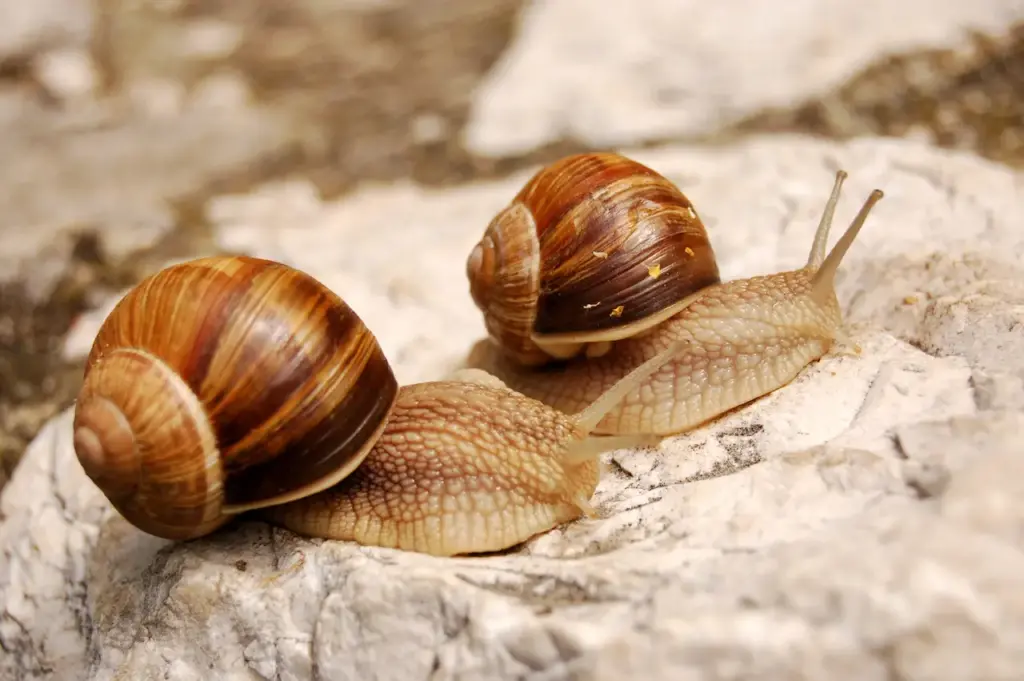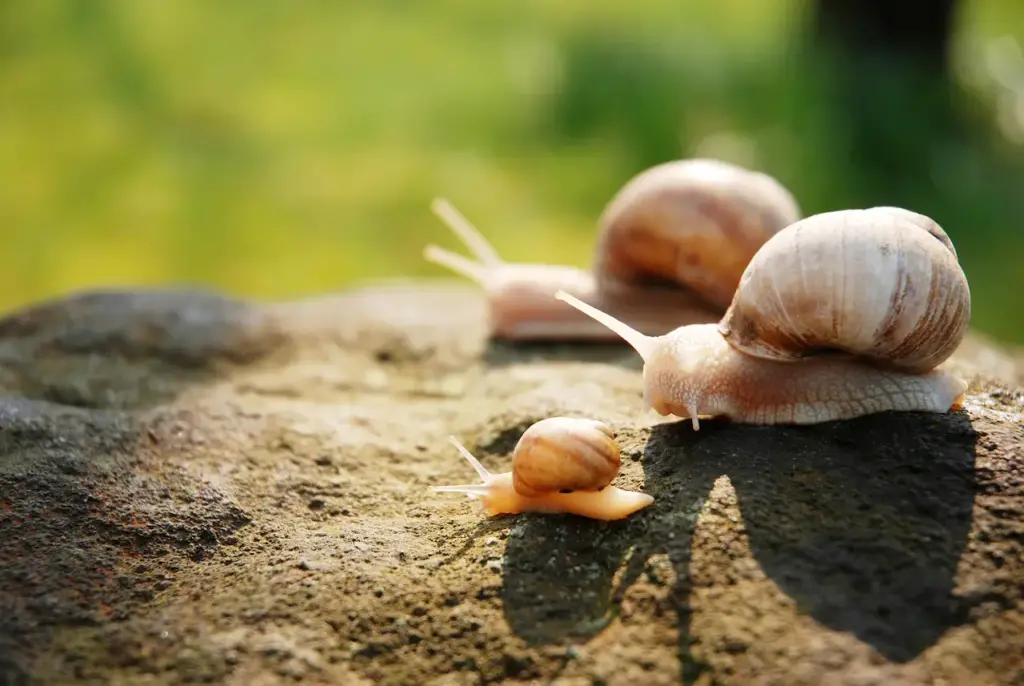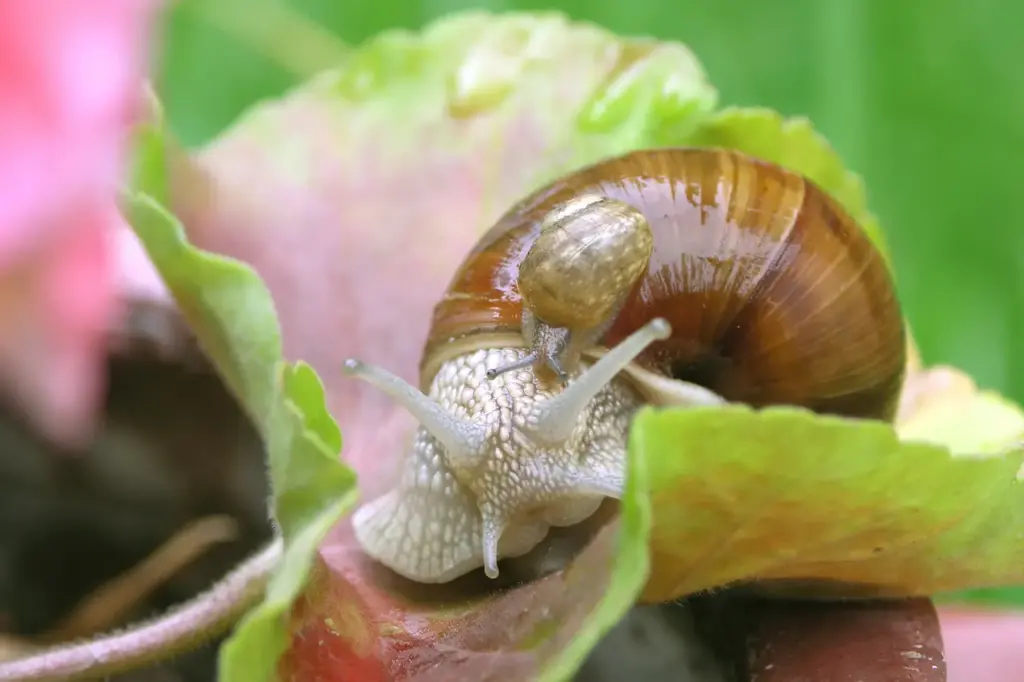What Eats Snails?
Categories
- Accipitridae (1)
- Acrididae (1)
- Algae (2)
- Alligatoridae (1)
- Amoebidae (1)
- Amphibians (3)
- Anatidae (1)
- Anguillidae (1)
- Arachnids (2)
- Bears (2)
- Big Cats (3)
- Birds (13)
- Bovidae (5)
- Bufonidae (1)
- Camelids (1)
- Cameras (1)
- Canines (13)
- Caridea (1)
- Carnivora (10)
- Castoridae (1)
- Cats (5)
- Cebidae (1)
- Cephalopod (1)
- Cervidae (2)
- Cetacean (1)
- Chondrichthyes (1)
- Crocodilia (2)
- Crustaceans (4)
- Culicidae (1)
- Cyaneidae (1)
- Dasypodidae (1)
- Dasyurids (1)
- Deer (1)
- Delphinidae (1)
- Desktop (1)
- Didelphidae (1)
- Dinosaurs (1)
- Dogs (13)
- Dolphins (2)
- Echinoderms (1)
- Education (10)
- Elephantidae (1)
- Equine (1)
- Erethizontidae (1)
- Erinaceidae (1)
- Farming (1)
- Felidae (5)
- Fish (5)
- Food Chain (31)
- Food Web (2)
- Formicidae (1)
- Frugivore (1)
- Gaming (1)
- Gastropods (1)
- Giraffids (1)
- Great Apes (2)
- Health Conditions (3)
- Herbivore (4)
- Hi-Fi (1)
- Hippopotamidae (1)
- Hominidae (1)
- Insects (10)
- Invertebrates (2)
- Keyboards (1)
- Laptops (1)
- Leporidae (1)
- Mammals (23)
- Marsupials (4)
- Mephitidae (1)
- Microchiroptera (1)
- Mollusks (2)
- Mongoose (1)
- Muridae (1)
- Nocturnal Animals (1)
- Odobenidae (1)
- Omnivore (2)
- Phasianidae (1)
- Phocidae (1)
- Plankton (1)
- Plants (2)
- Primate (1)
- Ranidae (1)
- Reptiles (7)
- Rhinocerotidae (1)
- Rodents (5)
- Salamandridae (1)
- Scarabaeidae (1)
- Sciuridae (2)
- Sharks (1)
- Shellfish (1)
- Sound (1)
- Spheniscidae (1)
- Suidae (1)
- Superfamily Papilionoidea (1)
- Theraphosidae (1)
- What Eats (5)
Snails hold a unique position in food webs around the world as small prey that are abundant yet individually vulnerable. Their calcified shells and mucus offer meager protection against determined predators attracted to their mineral richness and stationary habits.
As critical intermediate consumers recycling nutrients in ecosystems, snail populations also risk exploding without reliable natural controls in place.
Understanding exactly what eats snails provides deeper insight into the checks and balances governing species interdependence.
A diverse array of predatory birds, mammals, reptiles, amphibians, and crustaceans all eagerly feast on accessible snails to supplement nutritional shortcomings in their diets.
This steady pressure from all sides in turn prevents uncontrolled snail multiplication from severely damaging delicate plants anchoring ecosystems.
Elusive as they try to be while inching along trails, snails cannot escape shifting quickly enough to evade attacks when exposed. Hungry predators then utilize adapted methods to crack through calcium-rich shells, shielding soft flesh within.
The shell material gleaned aids in stiffening bird beaks, strengthening rodent teeth, and fortifying turtle plastrons and crustacean exoskeletons. Therefore, recycling snail shells propagates up food chains.
Examining snail predators reveals the impetus driving predator-prey dynamics ensuring stability. Snails flourish sufficiently to uphold ecosystem services while also providing nourishment to a spectrum of organisms.
Snails confront threats spanning precisely adapted birds, relentless small mammals, opportunistic herptiles, and marauding crustaceans.
Table of Contents
ToggleBirds
Many species of birds consume snails as an important food source. Shorebirds near coastlines and waterways routinely feast on marine snails and freshwater snails they encounter.
Examples like sandpipers, plovers, stilts and avocets probe wet mud for buried snails with their long beaks. Crows, ravens, jays and magpies also learn to smash land snails against rocks to crack open their shells and access the soft bodies.
Thrushes such as blackbirds, robins, and bluebirds specialize in thrashing snails. They beat large land snails repeatedly against objects to fracture the shells enough to tear out pieces of flesh with their beaks.
Songbirds like larks, finches, and sparrows peck away more gradually at broken shell openings to reach snail meat while avoiding sharp edges and slime.
Wild ducks, geese, and swans floating on the water tilt upside down to dip their heads below the surface to feed heavily on freshwater snails and larvae.
Overall, various bird species have adapted methods to gain access to digestible snails inside shells using precision, strength, or tool usage, becoming reliable predators. As snails regenerate, an ongoing bounty of small meals rewards those birds willing to work to extract them.
Rodents
Very often overlooked as a snail predator, rodents rely on rich deposits of calcium in shells to promote bone health and proper growth. Mice, rats, voles, squirrels, porcupines, and other gnawing mammals eat land snails whenever they encounter them.
With strong front teeth that continually grow, rodents easily chew through thinner-shelled snails for calcium supplements. They will even gnaw openings into thicker shells, enough to lick out snail meat with their tongues.
In agricultural areas, high mouse populations descend upon snail infestations in droves to curb their crop damage while benefiting physically.
As mainly nocturnal foragers, mice avoid overheating while collecting substantial piles of emptied land snail shells near their nesting areas to be found at daybreak. Squirrels crack open tree snail shells by chucking them to the ground from branches above.
Porcupines also chew up entire shells with quills guarding them from other predators trying to steal their haul.
For vegetation-nibbling small mammals, keeping calcium intake high by breaking into land snail shells provides necessary bone nutrition to endure environmental pressures.
Reptiles
Cold-blooded snakes, lizards, and turtles have developed quite an appetite for eating snails as well. Particularly larger species that hunt actively rather than wait to ambush more typical prey.
Notable snail-eating specialists include the Snail-Eating Snake from Southeast Asia and Snail Kite birds found throughout Central and South America. As the name suggests, Snail-eating snakes have unusually narrow heads allowing them to literally crawl inside shell openings to extract snail bodies with their teeth. Snail Kites sport specially adapted curved beaks used to tightly grip snail shells for dislodging meat to consume while soaring over wetlands.
Beyond those two remarkably adapted molluscavores, other snakes like rat snakes and kingsnakes will also routinely feed on land snails crossing their paths while foraging.
Growing juveniles especially benefit from buffering their development with this easily acquired calcium. Various skinks and other medium lizards also eat snails sporadically.
North American turtles smash land snails against logs and chomp down on aquatic snails whenever encountered while swimming about, providing valuable calcium to aid their shell growth.
For reptiles lacking defensive shells or durable bones of their own, hijacking calcium and minerals from the shells of snails likely helps balance nutritional deficiencies requiring less active hunting.
Amphibians
Frogs and toads similarly need to ingest shell-building minerals absent from most insects to maintain skeletal health as they hop about.
Thus, ambushing unwary snails serves as a convenient means for amphibians to incorporate calcium while stationed at the bottoms of food chains.
As masters of tongue projection, frogs like Bullfrogs and Pygmy Horned Frogs flick out their sticky tongues to latch onto passersby snails, dragging them back to swallow whole when feasible.
Salamanders such as the Red Salamander leverage Similarly adhesive tongues to ensnare forest snails. And hungry toads patiently stalk through vegetation, awaiting any snail that wanders too close to get grabbed and consumed.
Supplementing invertebrate prey with land snails when possible provides necessary nutrients for amphibians to have bone density to live successfully on land that insect prey alone cannot offer.
Crustaceans
Even armored crustaceans crash onto the scene of snail predation, given their unbalanced diets low in calcium. Many varieties of crayfish and crabs ambush freshwater snails to crack open shells for nourishing tissue and calcium to harden their own protective outer skeletons.
With heavy front claws specialized for gripping and crushing, crustaceans easily access the innards of small to medium snails.
Crayfish snip apart trapdoor snails, ramshorn snails, and pond snails, while clumsy apple snails get dismembered by crabs like angry piranhas. Bleeding out snail bodies release appetizing scents, drawing in more predators.
Much as birds converge opportunistically on oil slicks, clusters of crunching crustaceans can demolish entire generations of snails in feeding frenzies.
Their hunger for shell-building ingredients even drives invasive species like marbled crayfish and red swamp crawfish to annihilate native snail biodiversity outside home ranges.
Thus, crustaceans aggressively harvesting calcium resources from shelled prey reshape ecosystems by ruining sustainability.
Conclusion
Snails occupy vital environmental niches worldwide as intermediate consumers, recycling nutrients across habitats while provisioning food upwards. Yet their mineral-rich shells and sluggish locomotion also make snails prone to exploitation from all directions in the food web.
Birds lead aerial assaults to uproot hiding snails as rodents, reptiles, amphibians, and crustaceans run route on grounded individuals exposed.
This relentless pursuit by calcium-craving animals regulates snail abundance below overpopulated levels that could destructively overgraze plant life.
Thereby, the primal craving for calcium and other shell-sourced minerals, in effect, balances stability across countless ecosystems via diverse predators perpetually checking snail numbers.
Through investigating what eats snails, bigger revelations emerge of how intricately nature weaves competing survival needs into counterbalances, promoting sustainability from the bottom up.
When any snail feeder grows excessive enough to endanger this equilibrium, other consumers rise adaptively to usurp their monopoly over these indispensable calcium resources.



